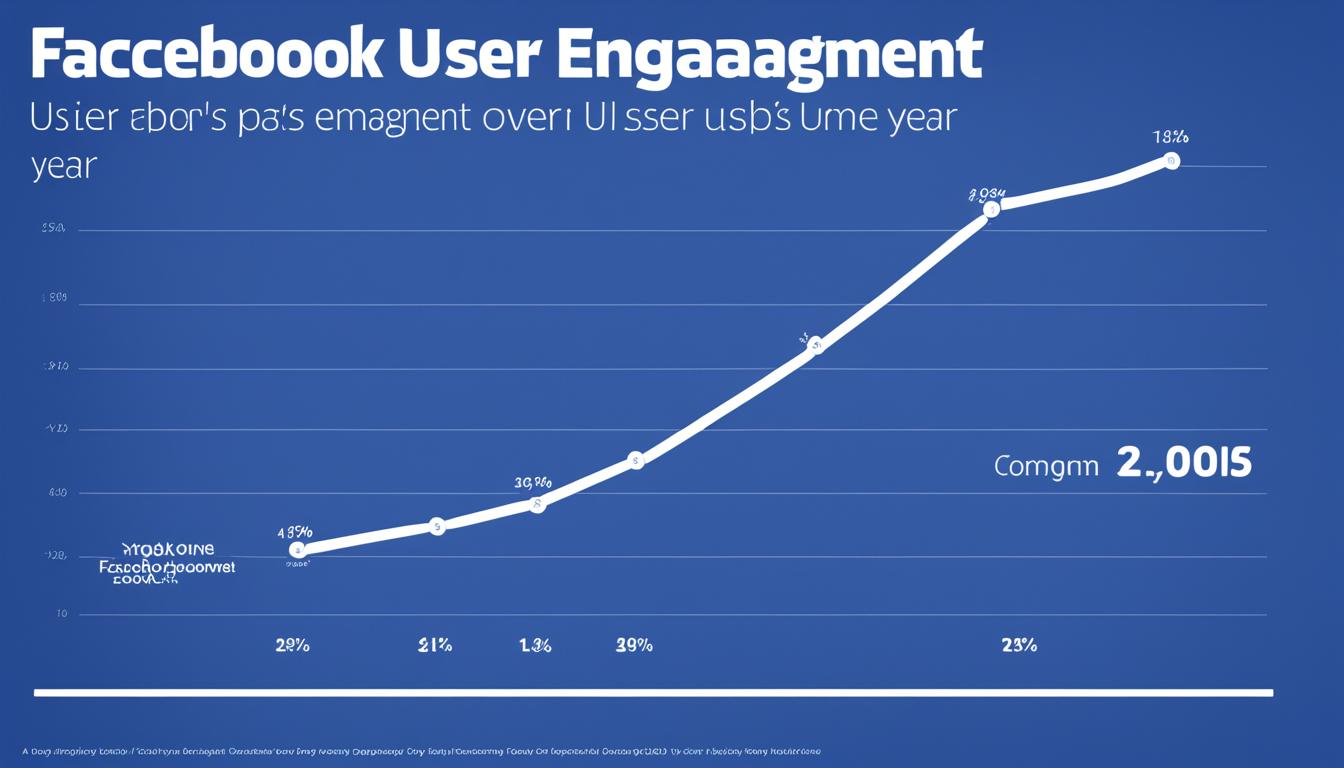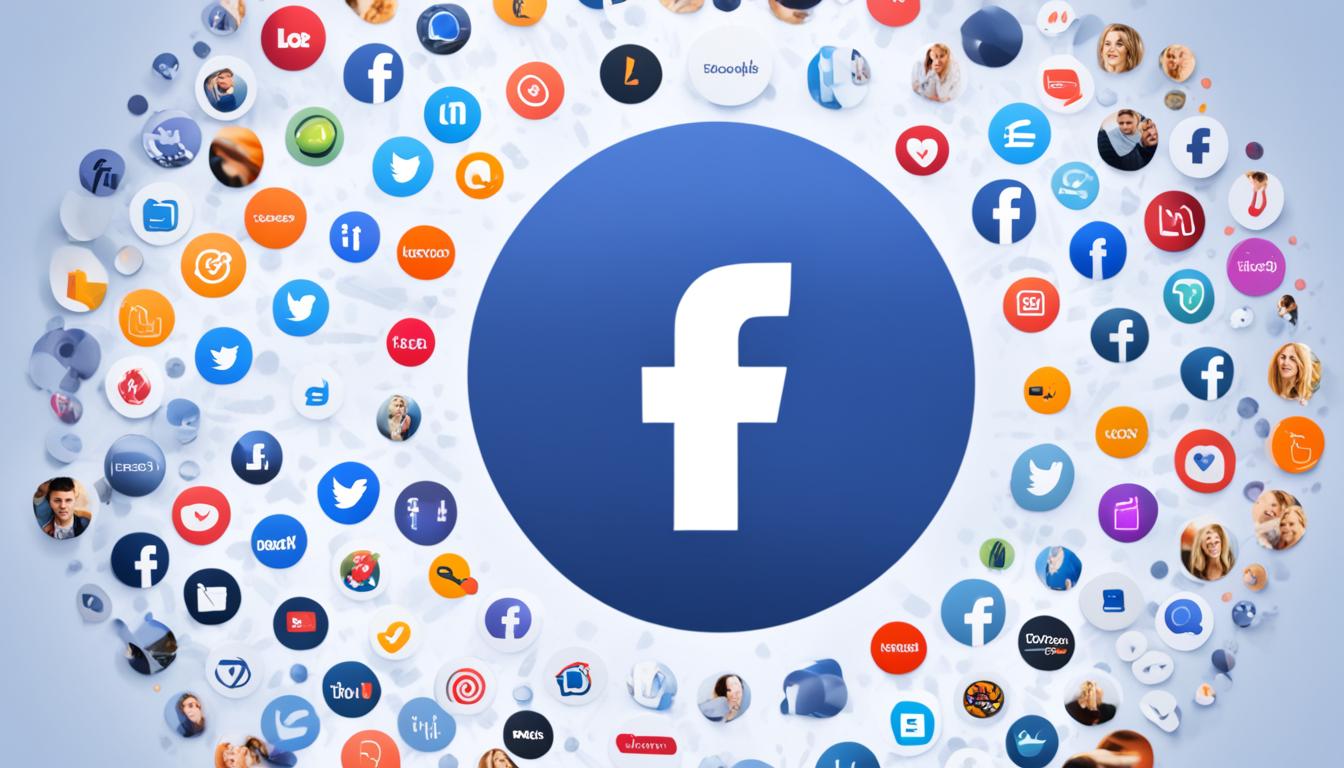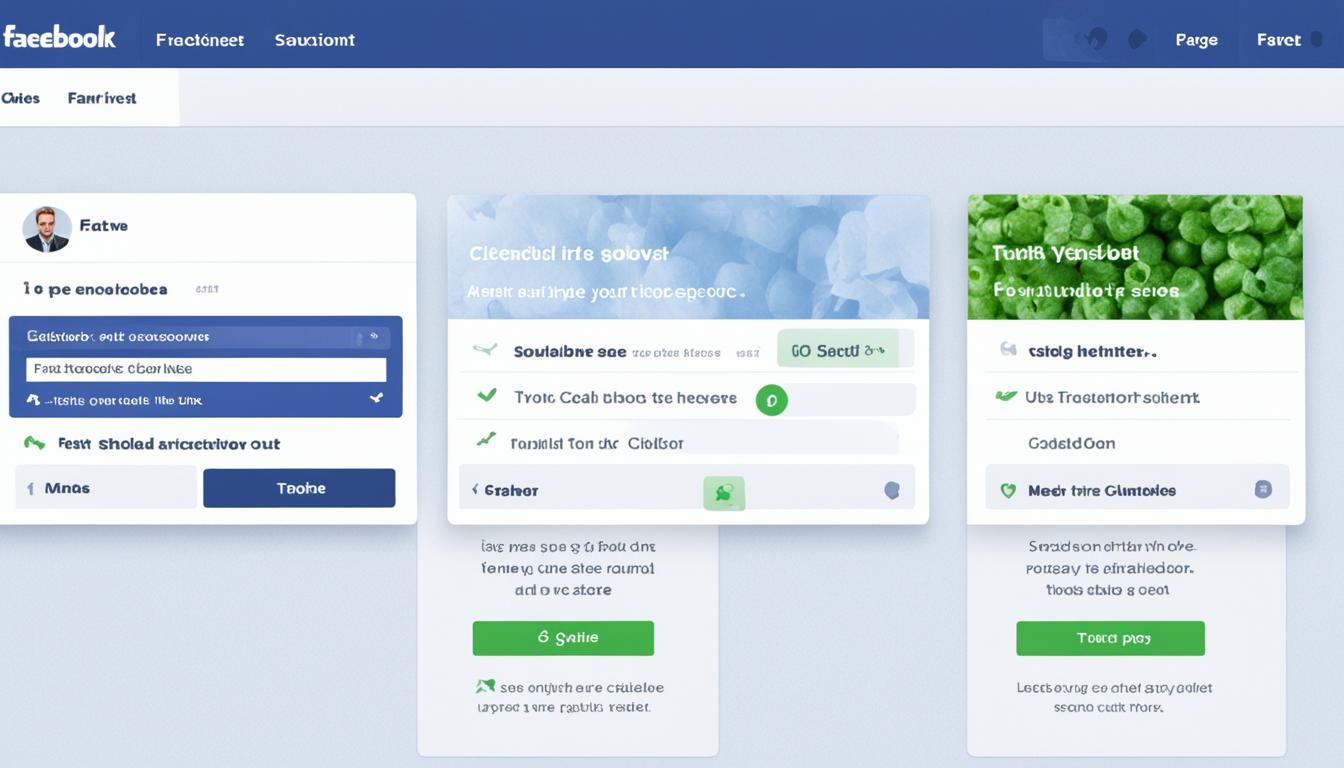Did you know that Facebook has over 3 billion monthly active users as of the second quarter of 2023? By the third quarter of 2023, Facebook’s global monthly active user count had increased to approximately 3.049 billion, solidifying its position as the top social networking site worldwide. This shows significant annual growth in monthly active users. Additionally, the platform sees around 2.085 billion daily active users (DAUs).
That’s more than the population of China, the most populous country in the world! It’s clear that Facebook continues dominating the social media landscape and is a powerful platform for businesses and marketers. These statistics highlight the continued widespread use and influence of Facebook as a social media platform.
Understanding the latest Facebook marketing statistics is crucial to reach a global audience, connect with potential customers, or drive conversions. In this article, we’ll dive into a wealth of data and insights that will help you harness the enormous potential of Facebook marketing.
Key Takeaways:
- Facebook has over 3 billion monthly active users, making it the most popular social network in the world.
- India has the largest Facebook audience, followed by the United States.
- The average engagement rate on Facebook Pages is less than 1%.
- More than 20% of Facebook users are between 18 and 24 years old.
- Facebook’s ad revenue is expected to reach $170 billion this year.
Facebook User Stats
When it comes to Facebook users, there are interesting statistics that highlight the platform’s demographics and usage trends. Let’s dive into the numbers:
Gender Distribution
Out of all Facebook users, 56.3% identify as male, while the remaining 43.7% identify as female.
Age Composition
Facebook’s user base skews younger, with millennials making up almost half of the audience. On the other hand, older demographics are less prevalent on the platform, with only 5.6% of users aged 65 and above. Additionally, teens today are less likely to use Facebook compared to a decade ago, as only 19% of them are daily active users. Interestingly, middle- or lower-income teens are more likely to use Facebook than those from higher-earning families.
User Profile
Furthermore, more than 20% of Facebook users fall within the 18 to 24 age group, representing a significant segment of the platform’s user base.
Now, let’s visualize the data:
| Gender Distribution | Age Composition | User Profile |
|---|---|---|
| Male: 56.3% Female: 43.7% | Millennials: Almost half Teens: 19% 18-24 age group: >20% |
These statistics provide valuable insights into the composition of Facebook’s user base, allowing marketers to tailor their strategies accordingly. In the next section, we’ll explore the various ways users engage with the platform and further analyze Facebook usage stats.
Facebook Usage Stats
When it comes to Facebook usage, the numbers are staggering. Users spend an average of almost 20 hours per month on the platform, making it a significant part of their online experience.
However, despite the amount of time spent, the average engagement rate on Facebook Pages is less than 1%. This means that the majority of content is not generating significant interaction or response from users.
When it comes to types of posts, image posts tend to have the highest engagement rate. Images have a way of capturing attention and encouraging users to like, comment, and share. On the other hand, link posts have the lowest engagement rate, as they often require users to leave the Facebook platform to access the linked content.
It’s also worth noting that more than 80% of people access Facebook on their phones. The widespread use of smartphones has made it easier than ever for users to stay connected and engaged with the platform.
Overall, these usage stats highlight the importance of understanding user behavior and preferences on Facebook. Marketers need to create compelling content and consider the mobile experience to effectively engage with their target audience on this popular social media platform.
Facebook Stats for Business
When it comes to using Facebook for business, the stats speak for themselves. With more than a billion people connecting with businesses on Facebook each week, it’s a powerful platform for reaching and engaging with customers. And it’s not just small businesses that are taking advantage of Facebook’s reach – a whopping 91% of organizations have a Facebook presence. But are brands confident that Facebook delivers a return on investment (ROI)? Surprisingly, only 62% of brands feel confident in Facebook’s ability to deliver results.
One interesting stat is that the most popular Facebook Fan Page is none other than Facebook itself. It’s a testament to the platform’s popularity and influence. Brands are also using Facebook actively to engage with their audience, with an average of 5 posts per week. Whether it’s sharing updates, promotions, or valuable content, brands know that staying active on Facebook is essential for maintaining visibility and building relationships.
Facebook Stories offer another opportunity for businesses to connect with their audience. More than half of users take action after seeing a brand’s Story, whether it’s visiting a website, making a purchase, or engaging with the brand further. It’s a powerful tool for capturing attention and driving conversions.
Facebook Stats for Business
| Statistic | Value |
|---|---|
| Number of people connecting with businesses on Facebook each week | Over a billion |
| Number of businesses using Meta apps | 200 million |
| Percentage of organizations with a Facebook presence | 91% |
| Percentage of brands confident in Facebook’s ROI | 62% |
| Most popular Facebook Fan Page | |
| Average number of posts per week by brands | 5 |
| Percentage of users taking action after seeing a brand’s Story | Over 50% |
These Facebook stats for business demonstrate the platform’s immense potential for driving brand awareness, engagement, and conversions. Businesses of all sizes can benefit from utilizing Facebook as part of their marketing strategy. By understanding these stats and keeping up with the latest trends, marketers can unlock the full power of Facebook for their business.
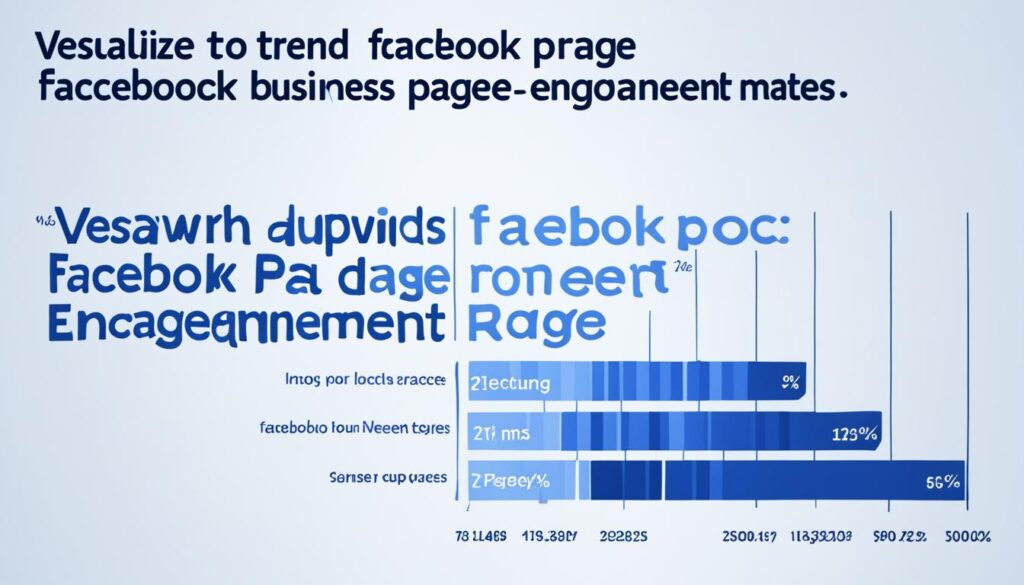
Facebook Ad Stats
When it comes to advertising on Facebook, the numbers speak for themselves. Here are some key statistics that highlight the platform’s immense reach and potential:
Expected Revenue: Facebook is projected to generate an impressive $170 billion in revenues this year, solidifying its position as a leading advertising platform.
Ad Reach: With a staggering ad reach of 1.98 billion, Facebook offers unparalleled opportunities for businesses to connect with a vast audience worldwide.
Impressions Increase: Last year, Facebook experienced a significant 31% increase in ad impressions, indicating a growing interest and engagement from users.
Click-through Rate: The average click-through rate (CTR) on Facebook ads is 1.4%. This means that for every 100 ad impressions, 1.4 users click on the ad, demonstrating the effectiveness of targeted advertising on the platform.
These statistics highlight the immense potential of Facebook as an advertising powerhouse. As businesses strive to reach their target audience and drive conversions, Facebook’s robust ad platform provides the tools and reach necessary to achieve those goals.
Quote:
“Facebook’s extensive ad reach and increasing ad impressions make it an ideal platform for businesses looking to maximize their advertising efforts and generate significant ROI.”
– Industry Expert

Facebook Shopping Stats
When it comes to shopping, Facebook is a powerhouse. The platform provides a seamless experience that encourages users to make purchases right from their feed. Let’s explore some eye-opening statistics that highlight the influence of Facebook on the world of social commerce.
37% of Facebook users will make a purchase on the platform
A significant portion of Facebook’s immense user base engages in shopping activities directly on the platform. With 37% of users making purchases on Facebook, it’s clear that the platform holds tremendous potential for businesses aiming to reach and convert customers.
Facebook is the leading platform for social commerce
When it comes to social commerce, Facebook reigns supreme. The platform has established itself as a go-to destination for users seeking product recommendations, discovering new brands, and making purchases. With its extensive user base and robust advertising capabilities, Facebook offers an unrivaled opportunity for businesses to tap into the power of social commerce.
Facebook Stories has 500 million daily active users

A visually captivating feature of Facebook, Stories, has gained immense popularity with a staggering 500 million daily active users. These ephemeral, short-lived posts provide businesses with an engaging way to showcase their products, create a sense of urgency, and drive conversions. By leveraging the reach and engagement of Facebook Stories, businesses can leverage its potential to capture the attention of potential customers and drive sales.
With these compelling shopping statistics, it’s clear that businesses can’t afford to overlook the power of Facebook in their marketing strategies. Whether it’s through seamless shopping experiences or engaging Stories, Facebook continues to shape the landscape of social commerce.
Facebook Traffic and Advertising Trends
When it comes to Facebook, understanding the latest traffic and advertising trends is essential for optimizing your marketing efforts. Let’s dive into some key statistics and metrics that can help inform your strategy.
Peak Traffic Times
Did you know that the highest global Facebook traffic occurs on Wednesdays and Thursdays, specifically between 11 a.m. and 2 p.m.? These are the prime hours when users are actively engaging on the platform, making it an ideal time to promote your brand or products.
Cost of Facebook Ads
In Q3 2022, the cost of Facebook ads dropped by an impressive 18%. This presents a significant opportunity for businesses to reach a wider audience while optimizing their advertising budget.
Projected Ad Revenue
Looking ahead, Facebook’s ad revenue is expected to reach a staggering $75.11 billion in 2024. This indicates the platform’s continued growth and potential for businesses to achieve substantial returns on their advertising investments.
Mobile Access Dominance
As of now, 98.5% of Facebook users access the platform via a mobile device. This statistics highlights the importance of mobile-friendly advertising strategies and ensures your content reaches the vast majority of Facebook’s audience.
By staying up-to-date with these Facebook advertising statistics and understanding the audience’s behaviors and preferences, you can maximize the effectiveness of your marketing campaigns and drive significant results for your business.
| Facebook Advertising Statistics | Metrics |
|---|---|
| Highest global Facebook traffic | Wednesday and Thursday, 11 a.m. to 2 p.m. |
| Cost of Facebook ads | Dropped by 18% in Q3 2022 |
| Projected Facebook ad revenue in 2024 | $75.11 billion |
| Mobile access | 98.5% of Facebook users access via mobile |
With these valuable insights, you can make data-driven decisions and tailor your Facebook advertising strategies to effectively reach and engage your target audience.
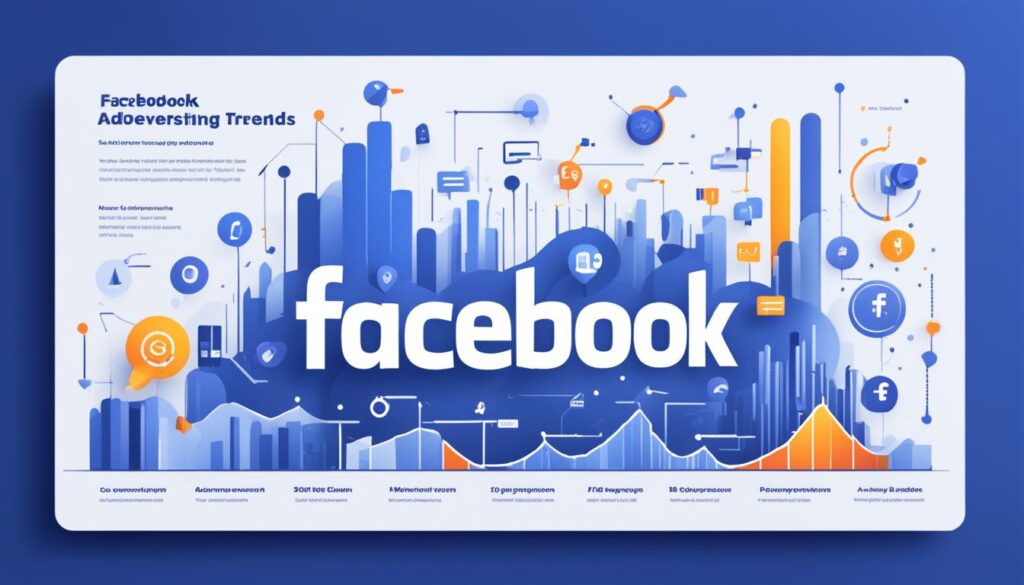
Facebook Global User Numbers
Facebook is undeniably the titan of the social media realm, boasting a massive user base that spans the globe. As of April 2023, Facebook has reached an impressive milestone with 2.989 billion monthly active users worldwide. This staggering number represents the vast reach and influence that this platform holds in the digital space.
Not only that, but Facebook also commands a significant daily active user count, with 2.037 billion people actively engaging on the platform every day. This level of daily interaction highlights the immense popularity and appeal of Facebook as a go-to social networking site for individuals across the globe.
This user base continues to grow steadily, with Facebook’s monthly active users increasing by 26 million in just the past 3 months alone. This sustained growth underscores the platform’s ability to captivate and retain a vast audience, solidifying its position as the kingpin of social media platforms.
Facebook Global User Numbers – At a Glance
| Monthly Active Users (April 2023) | 2.989 billion |
|---|---|
| Daily Active Users | 2.037 billion |
| Growth in the Past 3 Months | 26 million |
Image:
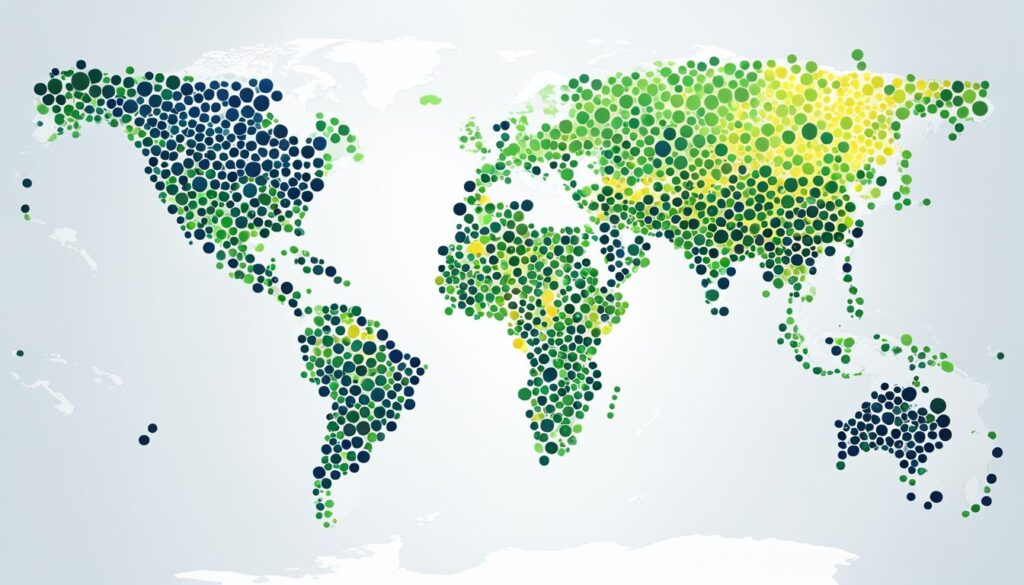
Facebook User Distribution by Country
| Country | Number of Facebook Users (in millions) |
|---|---|
| India | 369.9 |
| United States | 186.4 |
| Indonesia | 137.1 |
| Brazil | 129.9 |
| Mexico | 87.4 |
When it comes to Facebook user distribution, India takes the lead with a staggering 369.9 million active users, making it the country with the most Facebook users. Following closely behind is the United States, with a significant user base of 186.4 million. Indonesia, Brazil, and Mexico also boast substantial numbers of Facebook users, with 137.1 million, 129.9 million, and 87.4 million respectively.
“India has emerged as the frontrunner in terms of Facebook user numbers, solidifying its position as a key market for the platform. The United States follows suit, showcasing a robust user base that continues to engage and connect on the platform.”
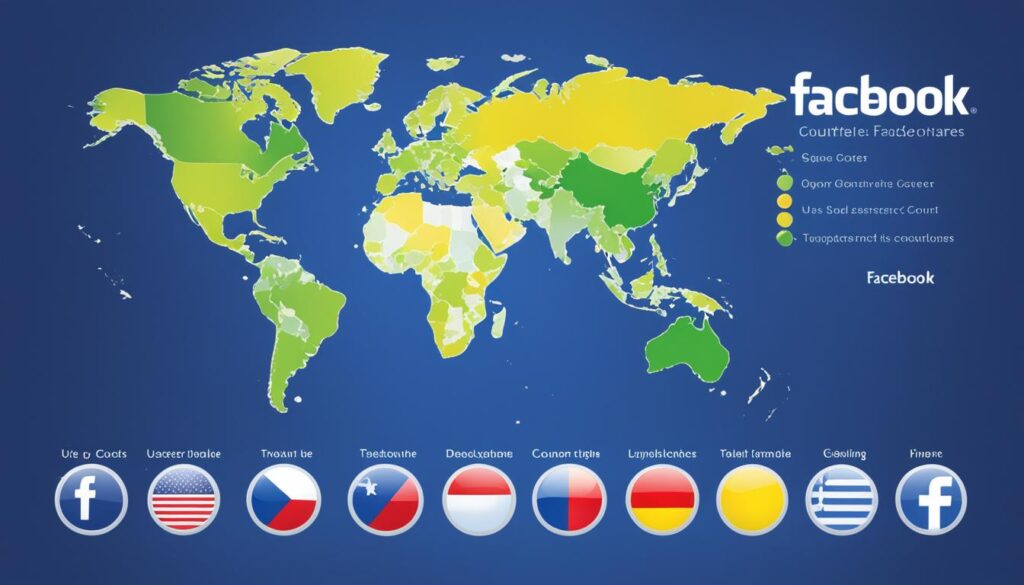
The Impact of User Distribution
The distribution of Facebook users across different countries has significant implications for marketers and businesses seeking to tap into the platform’s vast user base. These figures not only reflect the popularity of Facebook in different parts of the world but also highlight potential target audiences for advertising and promotional campaigns. By understanding the user distribution in different countries, businesses can tailor their marketing strategies to effectively reach and engage specific demographics.
Facebook User Distribution by Region
When it comes to Facebook users across different regions, the numbers vary significantly. Let’s take a closer look at the distribution of Facebook users by world region:
- Northern America: With a staggering 208.6 million users, Northern America has the highest number of Facebook users. This region includes countries like the United States and Canada, where Facebook has firmly established itself as a popular social media platform.
- Southeastern Asia: Coming in second place, Southeastern Asia boasts approximately 415.2 million Facebook users. This region includes countries like Indonesia, the Philippines, and Thailand, where Facebook has a significant presence and is widely used by the population for social networking and communication.
- Central Asia: While Central Asia has fewer Facebook users compared to other regions, it still contributes to the global user base with approximately 5.8 million users. This region encompasses countries like Kazakhstan, Kyrgyzstan, Tajikistan, Turkmenistan, and Uzbekistan, where Facebook usage is gradually gaining traction.
These regional disparities highlight the varying degrees of Facebook’s popularity and user adoption worldwide. Facebook’s global reach is evident, with a diverse user base spanning different regions, each with its own unique characteristics and demographics.
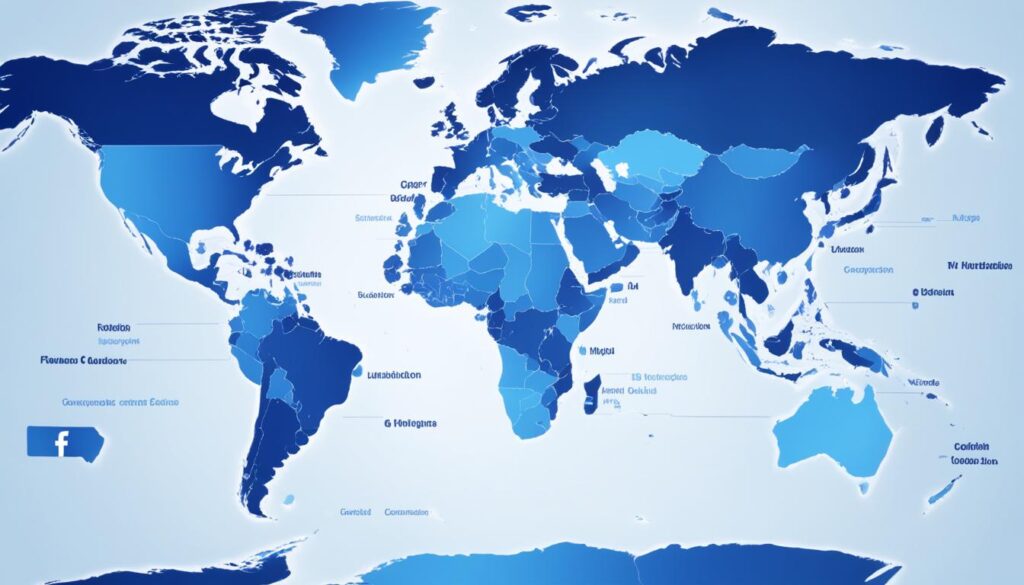
As shown in the image above, Facebook’s user distribution is not evenly spread across the world, with certain regions experiencing higher levels of user engagement and activity. Understanding these regional dynamics is crucial for businesses and marketers seeking to leverage the Facebook platform to reach their target audiences effectively.
Facebook Audience Demographics
Understanding the demographics of Facebook’s global user base is crucial for any marketer looking to connect with their target audience effectively. Let’s take a closer look at the key demographic insights:
- 43.2% of Facebook’s global users are female. This highlights the significant presence of women on the platform, offering great opportunities for businesses targeting female consumers.
- 56.8% of Facebook’s global users are male. With a majority male user base, businesses can tailor their marketing strategies to cater to the interests and preferences of male users.
Furthermore, it is important to note that the median age of Facebook’s advertising audience is 32 years old. This demographic data provides marketers with valuable insights into the age group they can reach effectively on the platform.
Targeting Diverse Audiences for Optimal Results
The diversity of Facebook’s user base allows marketers to customize their campaigns and engage with specific demographics effectively. By tailoring content, ads, and messaging to resonate with different segments of users, businesses can maximize their reach and drive meaningful interactions.
In today’s digital marketplace, understanding the demographics of your target audience is crucial for effective marketing. With various demographics represented on Facebook, businesses have the opportunity to create impactful campaigns that resonate with their specific target markets.
Let’s further explore the global user base demographics of Facebook in the table below:
| Demographic | Percentage |
|---|---|
| Female Users | 43.2% |
| Male Users | 56.8% |
| Median Age of Advertising Audience | 32 years |
By leveraging these demographic insights, marketers can create targeted and personalized campaigns that resonate with Facebook’s diverse user base, ultimately driving better results for their businesses.
Now that we have explored the audience demographics of Facebook, let’s move on to the conclusion and summarize the key takeaways from our analysis of Facebook’s latest marketing statistics.

Conclusion
Facebook continues to dominate the social media landscape with more than 3 billion active users each month. This massive user base provides marketers with invaluable insights into user demographics and engagement rates. By understanding who is using Facebook and how they are interacting with the platform, businesses can tailor their marketing strategies to effectively reach their target audience.
Furthermore, Facebook’s advertising reach and revenue continue to grow, making it an attractive platform for businesses to promote their products and services. With an ad reach of nearly 2 billion and an expected revenue of $170 billion this year, Facebook offers vast opportunities for brands to connect with their customers and drive business growth.
In addition to traditional advertising, businesses can also leverage Facebook’s features like Stories to enhance their social commerce efforts. With 500 million daily active users on Facebook Stories, brands can create engaging and interactive content to showcase their products and drive conversions.
As Facebook’s platform and user behavior continue to evolve, it is crucial for marketers to stay up-to-date with the latest trends and adjust their strategies accordingly. By staying informed and adapting to changes, businesses can capitalize on Facebook’s immense reach, engagement, and advertising potential to achieve their marketing goals and drive business success.
FAQ
What are some important Facebook marketing statistics?
Here are some key statistics about Facebook marketing:
- Facebook has over 3 billion monthly active users as of Q2 2023.
- More than 2 billion people use Facebook daily.
- Facebook.com is the third-most visited website.
- 1.3 billion fake Facebook accounts are removed quarterly.
- India is Facebook’s biggest audience.
- Facebook reaches 75% of the world’s population by 2027.
What is the demographic breakdown of Facebook users?
The demographic breakdown of Facebook users is as follows:
- 56.3% of Facebook users are male.
- Only 5.6% of Facebook users are over 65 years old.
- Millennials make up almost half of Facebook’s audience.
How engaged are Facebook users?
Facebook users spend almost 20 hours a month on the platform. However, the average engagement rate on Facebook Pages is less than 1%. Image posts tend to have higher engagement rates compared to link posts.
How do businesses use Facebook for marketing?
Facebook is a popular platform for businesses to connect with potential customers. Some key statistics include:
- More than a billion people connect with businesses on Facebook each week.
- 200 million businesses use Meta apps.
- 91% of organizations have a Facebook presence.
- Only 62% of brands are confident that Facebook delivers ROI.
What are some Facebook advertising statistics?
Here are some important advertising statistics for Facebook:
- The average click-through rate on Facebook ads is 1.4%.
- Ad impressions increased by 31% last year.
- Facebook ad revenue is expected to hit $75.11 billion in 2024.
Is Facebook a popular platform for social commerce?
Yes, Facebook is the leading platform for social commerce, with 37% of users making a purchase on the platform. Facebook Stories, in particular, has 500 million daily active users.
What are the trends in Facebook traffic and advertising?
Some key trends in Facebook traffic and advertising include:
- More than 80% of people access Facebook on their phones.
- The best time to post on Facebook is between 8:00 a.m. and noon, Tuesday or Thursday.
- The cost of Facebook ads dropped by 18% in Q3 2022.
What are the global user numbers for Facebook?
Facebook has 2.989 billion monthly active users as of April 2023. The number of daily active users is 2.037 billion.
Which countries have the highest number of Facebook users?
India has the most active Facebook users with 369.9 million, followed by the United States with 186.4 million. Other countries with significant Facebook user numbers include Indonesia, Brazil, and Mexico.
How are Facebook users distributed by region?
Northern America has the most Facebook users with 208.6 million, while Southeastern Asia has the second highest number with 415.2 million users. Central Asia has the fewest Facebook users with 5.8 million.
What are the audience demographics on Facebook?
43.2% of Facebook’s global users are female, while 56.8% are male. The median age of Facebook’s advertising audience is 32 years old.
Are there any concluding thoughts on Facebook marketing statistics?
Facebook remains a dominant force in the social media landscape, with billions of active users and opportunities for businesses. It is important for marketers to stay updated on the latest trends and adjust their strategies accordingly to effectively utilize Facebook’s advertising reach and engage with their target audience.
